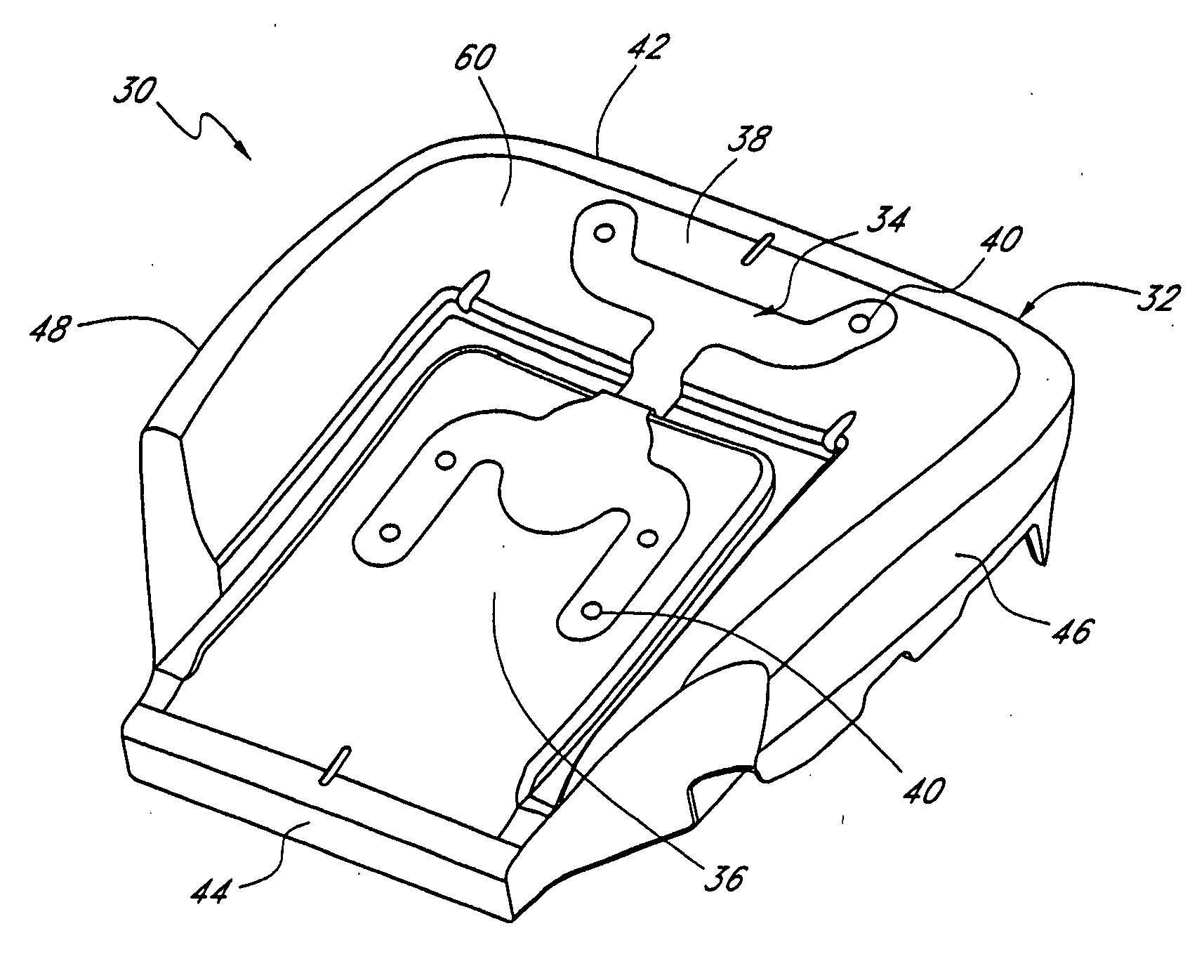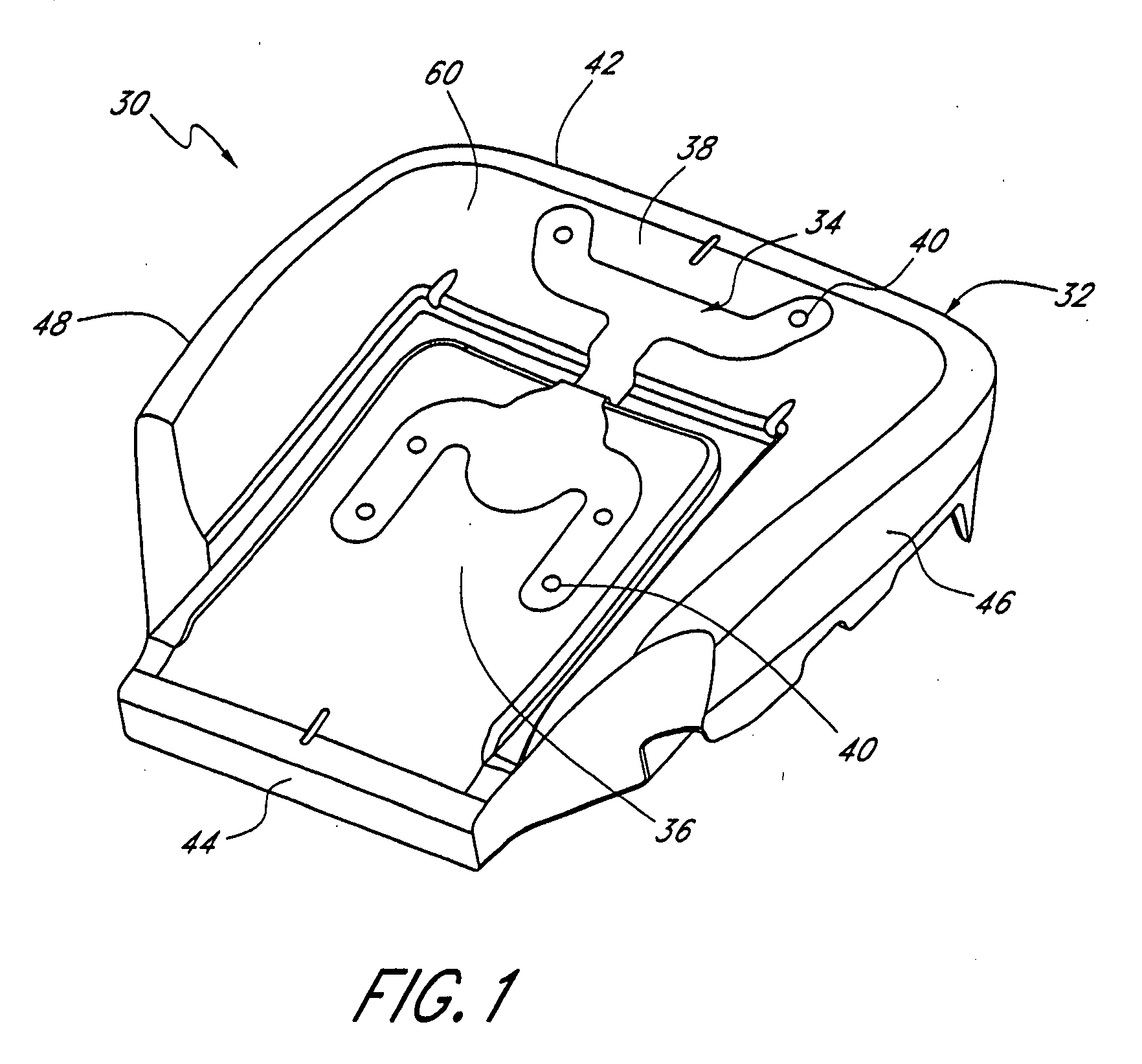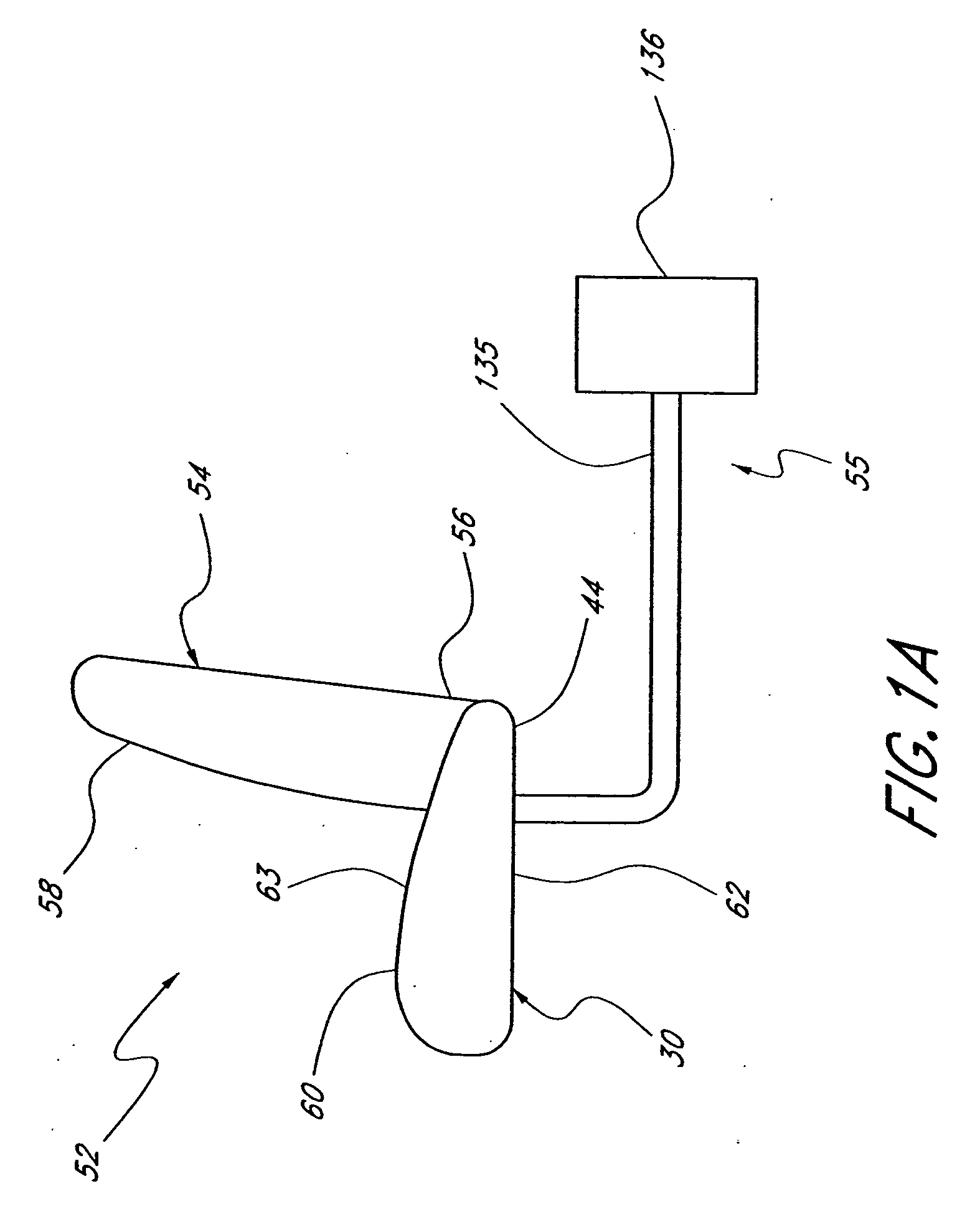Climate controlled seat
a seat and climate control technology, applied in the direction of chairs, pedestrian/occupant safety arrangements, vehicular safety arrangements, etc., can solve the problems of existing climate control systems, seat occupants' back and other pressure points may remain sweaty, and the seat is very hot and uncomfortable for a long tim
- Summary
- Abstract
- Description
- Claims
- Application Information
AI Technical Summary
Benefits of technology
Problems solved by technology
Method used
Image
Examples
Embodiment Construction
[0031] The preferred embodiments described herein generally relate to seats in the form of vehicle or automotive seats. Generally a vehicle seat can have a seat bottom and seat back. In some embodiments, the seat bottom can have an insert located between the seat upholstery and the seat cushion. The insert can be in fluid communication with the cabin space of the vehicle. Air can flow through the insert and out of the seat to control the climate around the person in the seat. The insert can also be used to remove air from the cabin of the vehicle. The air can then pass through the insert and is delivered to a fluid line.
[0032] To assist in the description of the disclosed embodiments, words such as upward, upper, downward, lower, vertical, horizontal, upstream, and downstream are used to describe the accompanying figures. It will be appreciated, however, that the illustrated embodiments can be located and oriented in a variety of desired positions.
[0033]FIG. 1 illustrates an exemp...
PUM
| Property | Measurement | Unit |
|---|---|---|
| hydraulic diameter | aaaaa | aaaaa |
| width | aaaaa | aaaaa |
| distance | aaaaa | aaaaa |
Abstract
Description
Claims
Application Information
 Login to View More
Login to View More - R&D
- Intellectual Property
- Life Sciences
- Materials
- Tech Scout
- Unparalleled Data Quality
- Higher Quality Content
- 60% Fewer Hallucinations
Browse by: Latest US Patents, China's latest patents, Technical Efficacy Thesaurus, Application Domain, Technology Topic, Popular Technical Reports.
© 2025 PatSnap. All rights reserved.Legal|Privacy policy|Modern Slavery Act Transparency Statement|Sitemap|About US| Contact US: help@patsnap.com



